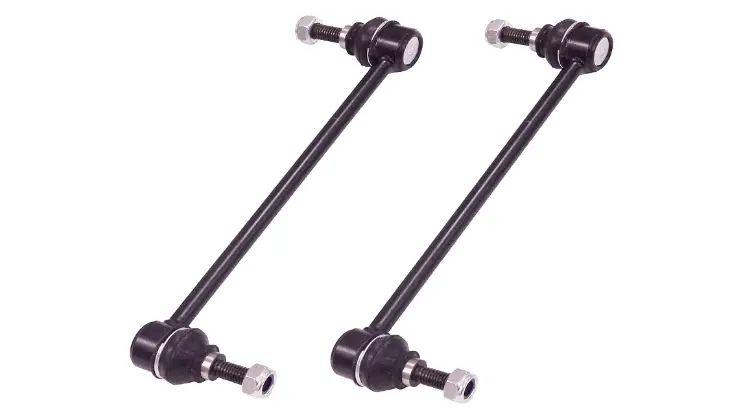When it comes to the suspension system of your vehicle, the sway bar plays an important role in keeping your vehicle stable while cornering. The sway bar links are essential components that connect the sway bar to the suspension system. However, if the sway bar links are not installed or maintained properly, it can lead to safety concerns and reduced handling performance. In this article, we what happens if you over tighten sway bar links.
Contents
What is Sway Bar Links?
The sway bar links connect the sway bar to the suspension system, helping to reduce body roll while cornering. There are different types of sway bar links, including traditional bolt-on links and more advanced end-link designs. The end-link designs are more expensive, but they are more durable and offer better handling performance.
What Happens if You Over Tighten Sway Bar Links?
When you over-tighten sway bar links, you create excessive stress on the components. This can lead to damage to the links and increased wear and tear on other suspension components. Over-tightened sway bar links can also lead to impaired handling and stability of the vehicle, which can create safety concerns.
Excessive Stress on the Sway Bar Links
Over-tightening the sway bar links can cause excessive stress on the components. The sway bar links are designed to move and flex as the suspension moves. When they are over-tightened, they can’t flex as they should, leading to stress that can eventually cause the links to fail. This failure can occur in the form of a snapped or bent sway bar link.
Damage to the Sway Bar Links
Over-tightening sway bar links can also cause damage to the components. When the links are over-tightened, they can cause deformation or cracking, which can weaken the links over time. This damage can eventually lead to the failure of the links, which can result in poor handling and safety issues.
Increased Wear and Tear on Other Suspension Components
Over-tightening the sway bar links can also lead to increased wear and tear on other suspension components. When the links are over-tightened, they can’t move and flex as they should, which can cause additional stress on other suspension components. This additional stress can lead to increased wear and tear, which can result in expensive repairs over time.
Impaired Handling and Stability of the Vehicle
Over-tightening sway bar links can also lead to impaired handling and stability of the vehicle. When the links can’t move and flex as they should, the suspension system can’t work properly. This can lead to poor handling and stability, which can make driving the vehicle more difficult and unsafe.
Signs of Over-tightened Sway Bar Links
There are several signs that your sway bar links have been over-tightened. These signs include –
Unusual noises: One of the most common signs of over-tightened sway bar links is unusual noises coming from the suspension system. This may include clunking or rattling sounds when driving over bumps or making turns.
Uneven tire wear: Over-tightened sway bar links can cause uneven wear on the tires, as the suspension system may not be able to properly distribute weight across the tires. This can cause one or more tires to wear out more quickly than the others.
Poor handling: Over-tightened sway bar links can compromise the handling and stability of the vehicle, making it more difficult to control on the road. This may include increased body roll during turns or a tendency to drift or veer off course.
Reduced ride quality: Over-tightened sway bar links can also affect the overall ride quality of the vehicle, making it feel stiffer or more rigid than it should. This can be particularly noticeable when driving on rough or uneven surfaces.
Suspension damage: If left unchecked, over-tightened sway bar links can cause damage to other components of the suspension system, such as the bushings, ball joints, or control arms. This can lead to more serious issues and costly repairs down the line.
If you notice any of these signs while driving, it’s important to have your vehicle inspected by a qualified mechanic to determine the cause of the issue. Proper maintenance and care of the sway bar links can help prevent over-tightening and ensure that your vehicle’s suspension system is operating at peak performance.
How to Avoid Over-Tightening Sway Bar Links
To avoid the potential consequences of over-tightening sway bar links, it’s important to follow a few key guidelines:
Follow manufacturer torque specifications: The manufacturer provides torque specifications for sway bar link bolts, and it’s important to follow these specifications carefully to avoid over-tightening.
Use a torque wrench to properly tighten the bolts: A torque wrench is the best tool to use when tightening sway bar link bolts because it allows you to tighten the bolts to the proper torque specifications without over-tightening.
Check the sway bar links regularly for wear and tear: Regular inspections can help you identify any signs of wear and tear on the sway bar links, allowing you to address any issues before they become more serious.
Conclusion
Over-tightening sway bar links can lead to serious issues and compromise the performance of a vehicle’s suspension system. By understanding the function of sway bar you can avoid over-tightening and ensure that your vehicle’s suspension system is operating at peak performance. Proper maintenance of sway bar links is crucial for keeping your vehicle safe and handling well on the road.
